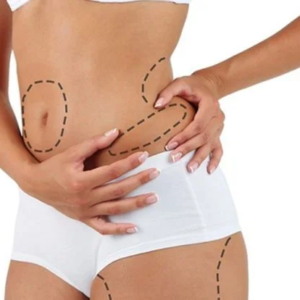Sleep Apnea & Snoring: How Does It Increase The Risk Of Cardiac Disease?

When that person in the next bunk, next room, or a few inches away trails off into sleep and starts snoring, you likely to get angry, even try to push the person awake in hopes of stopping the snoring. However, those few moments, in between snores, when that person is silent, there is a high chance the person is actually not breathing and this is dangerous and potentially life-threatening. This condition is called sleep apnea.
It is a serious condition wherein the person experiences repeated cessation of breathing, sometimes up to 30 times in an hour, due to a complete or partial blockage of the pharynges. Due to this, the person’s sleep is constantly broken as he/she always has to gasp for air. Herein lies a danger as rest becomes hard to get, paving the way for such diseases like high blood pressure and stroke.
Types of Sleep Apnea
There are two major types of sleep apnea:
- Obstructive sleep apnea
- Central sleep apnea.
Obstructive sleep apnea, which is the more common of the two, occurs when the airway is blocked during sleep, usually by the collapse of the soft tissue in the back of the throat.
Central sleep apnea, on the other hand, occurs when the brain does not send the right signals to the muscles (the diaphragm) that cater to breathing while you are asleep; no message, no work.
A rare, and usually not discussed a form of sleep apnea is complex sleep apnea syndrome which is a combination of obstructive sleep apnea and central sleep apnea.

Common Symptoms of Sleep Apnea
Both types of sleep apnea share physical symptoms. Hence, you would need professional medical help to ascertain which of the two forms you are suffering from.
Herein are a few common signs of apnea (both):
- Loud snoring
- Insomnia
- Hypersomnia
- Truncated sleep due to gasping for air
- Episodes of not breathing during sleep
- Irritability (this is due to the lack of sleep)
- Drop in attention span
Sleep Apnea and Cardiovascular Diseases
Researchers in the field of medicine are generally agreed on the connection between sleep apnea and cardiovascular diseases like high blood pressure. The relationship between both conditions is quite a direct one and one that requires utmost attention as heart diseases and strokes are the leading causes of death and disability in developed nations like the UK and the United States.
As pointed out earlier, sleep apnea, which is associated with cardiorespiratory issues like loud snoring, causes repeated sleep disturbances and contribute significantly to the ability to recuperate. It also leads to being constantly fatigued and, in some cases, irritable. As time goes on, if left untreated, the affected person would begin to see a drop in performance and output.
Believed to be more prevalent than asthma, sleep apnea increases the risk of having a heart failure by over 100 percent, stroke by over 60 percent, and is usually accompanied by depression, anxiety, and in rare cases, bipolar disorder.
In addition, there is evidence that shows, treating sleep apnea with CPAP also leads to a fall in systolic blood pressure and aids left the ventricular systolic function. According to the National Commission on Sleep Disorders Research, more than 30,000 yearly deaths can be traced to apnea and cardiovascular diseases.
What are the Causal Factors?
The thing with apnea and cardiovascular diseases is the number of causal factors which they share. They are both associated with obesity, poor lifestyle choices, bad eating habits, stress, and more In the case of obesity, this condition is made worse because lack of sleep is itself a contributing factor to weight gain. There is a sort of mutual contribution as being obese causes the muscles in the upper airway area to lose tone, severely affecting their ability to hold the airway open. As long as the airway is closed, breathing is obstructed, leading to sleep apnea.
Other factors include having a large neck circumference as people with large neck circumferences tend to have narrow airways, smoking, nasal congestion, old age, drug abuse, and heavy alcohol intake.
Getting Treatment
This is key and even those who do not have it have a role to play. Their role is in noticing if the person sleeping close to you stopped snoring because of he or she has stopped breathing. The person sleeping might not know or know how many times during the night it happened.
The first step to treating sleep apnea is immediately seeking medical advice. Do not self-treat. Go and see a doctor. Apart from getting the right diagnosis, you get a chance to see if you have any other ailment, like hypertension, lurking.

The visit to a doctor might include a sleep study. This, which might involve an overnight stay, is a process that involves the heart ECG monitoring of a person while sleeping. This is in order to chart such things as eye movement, airflow, blood oxygen levels, and muscle activity, diagnose sleep apnea and know how severe it is.
So also, a continuous positive airway pressure device (CPAP) can be used. The CPAP is a mask worn while sleeping which blows air into the airway, thereby ensuring the airways remain open when you are sleeping.
Other solutions are:
- Eating healthy
- Exercising regularly
- Making healthy lifestyle choices
- A sharp drop in alcohol consumption
- Cutting out smoking or significantly reducing it
- No caffeine before bed
- Sleep masks and ear muffs if light and sound keep you awake and
- Regular check-ups to ensure you are getting better.




